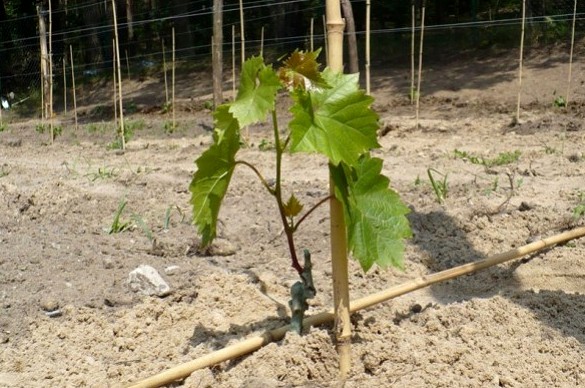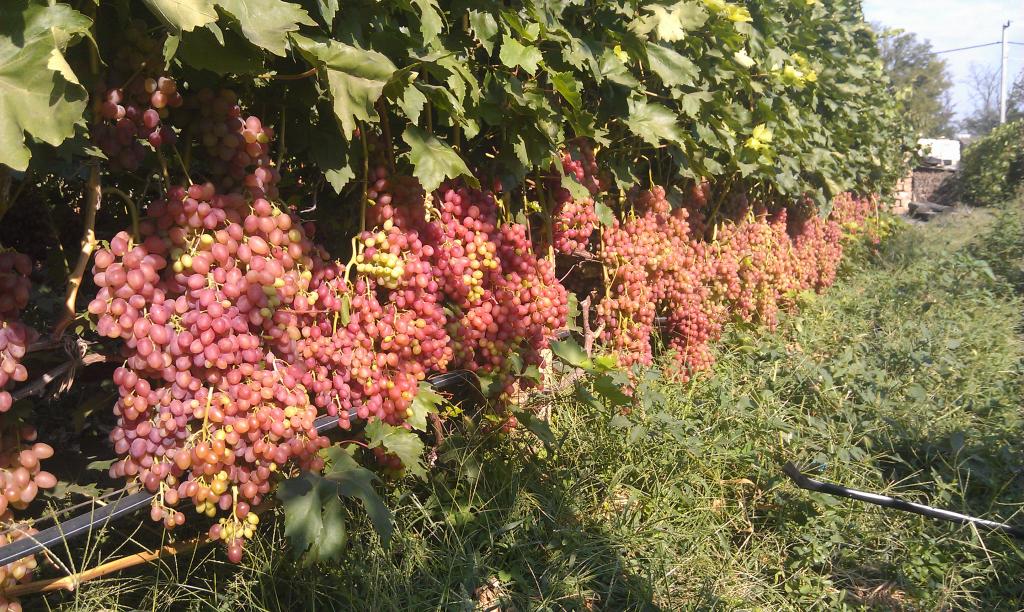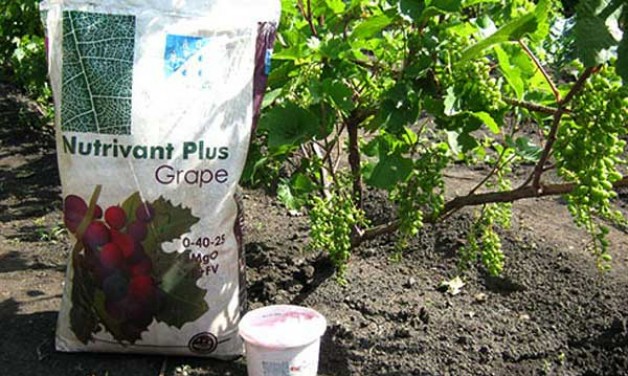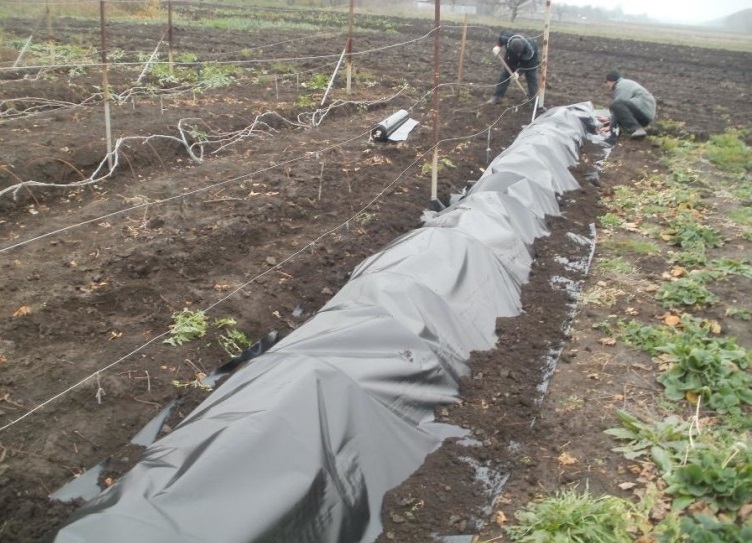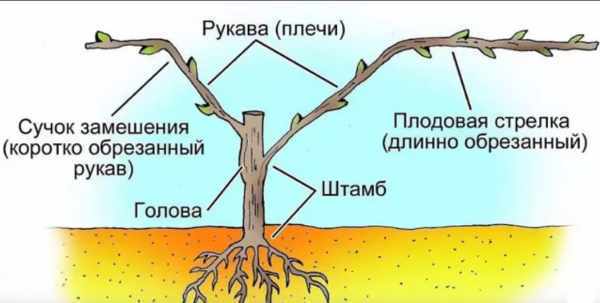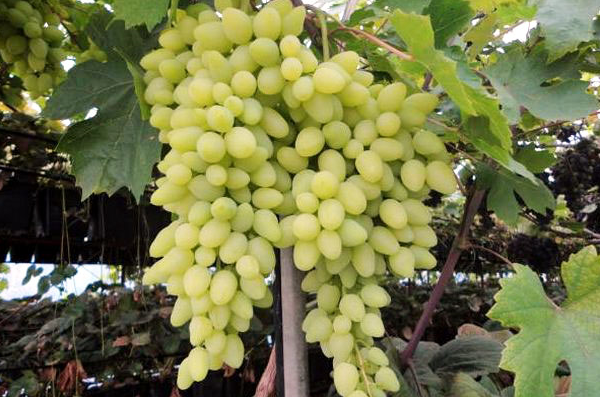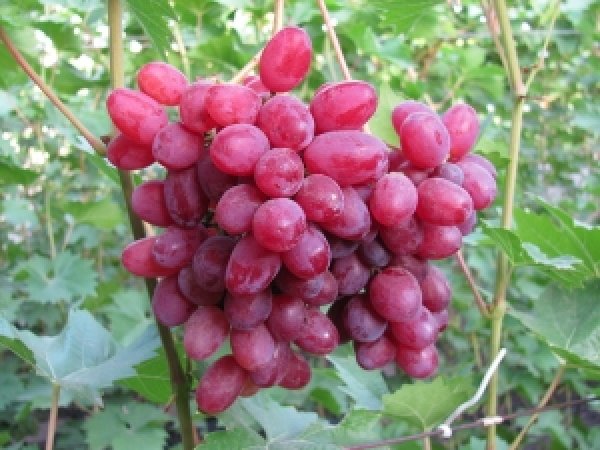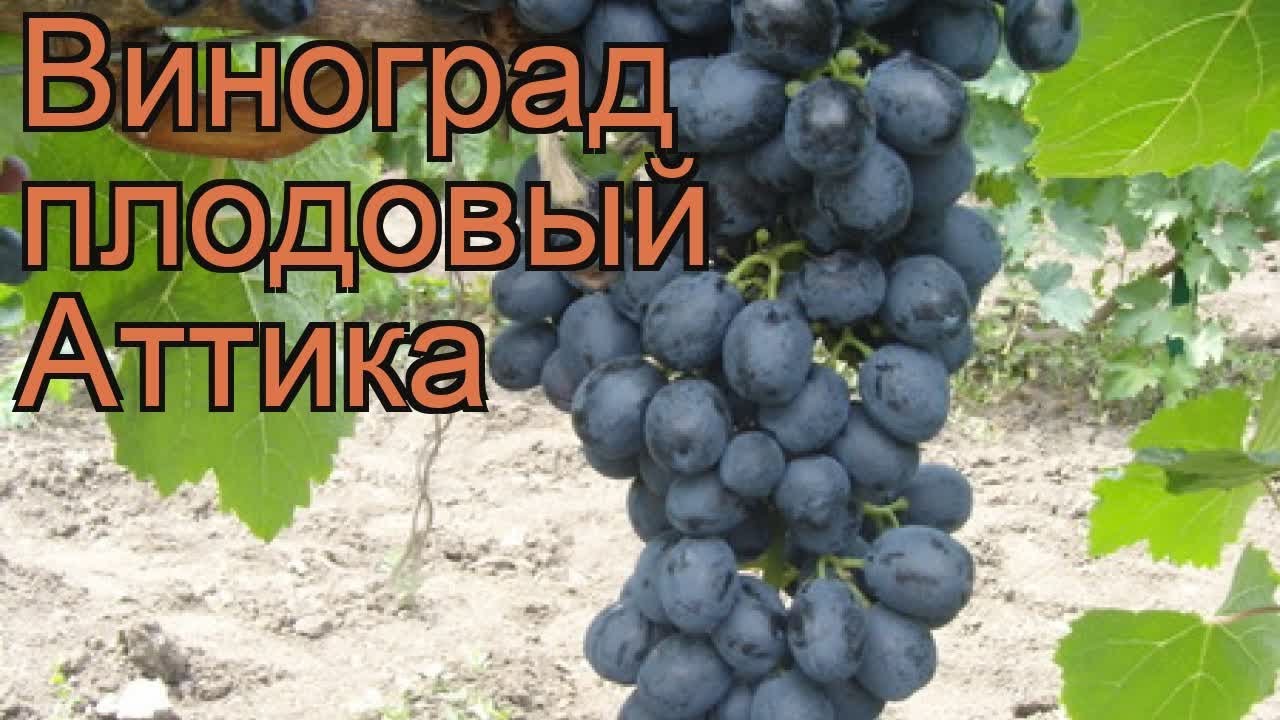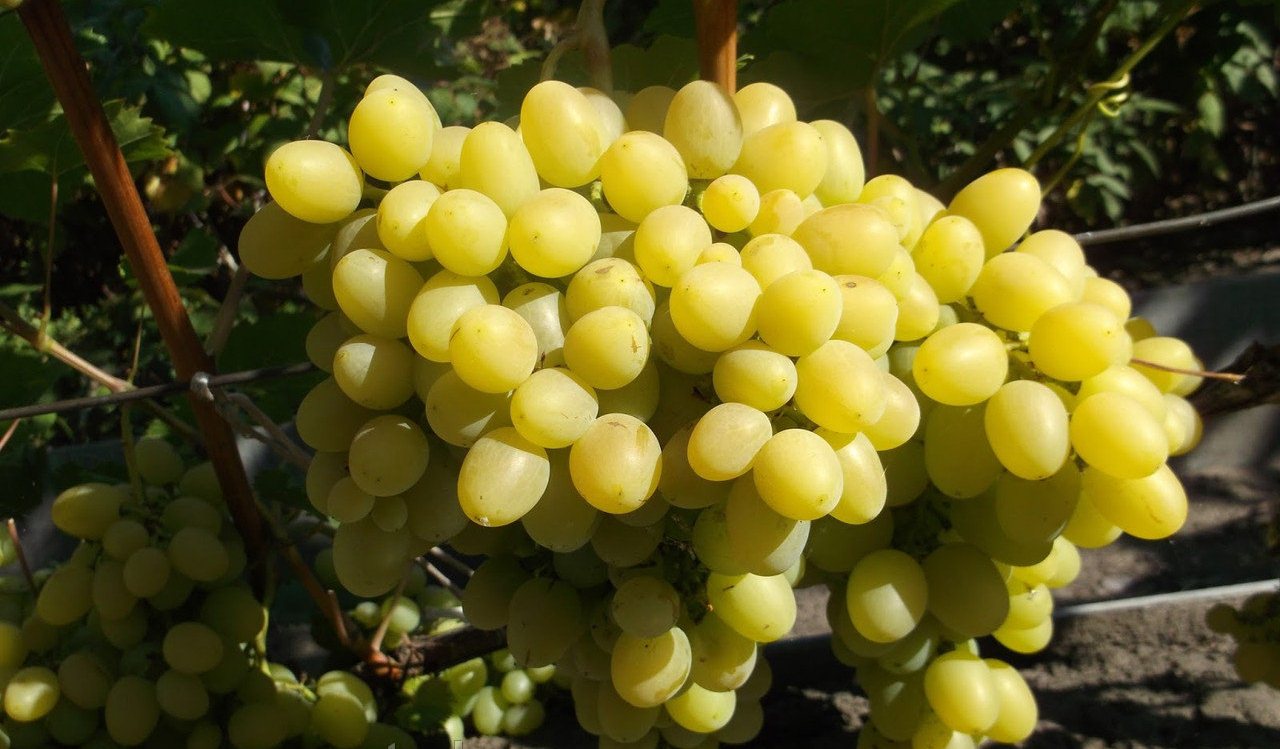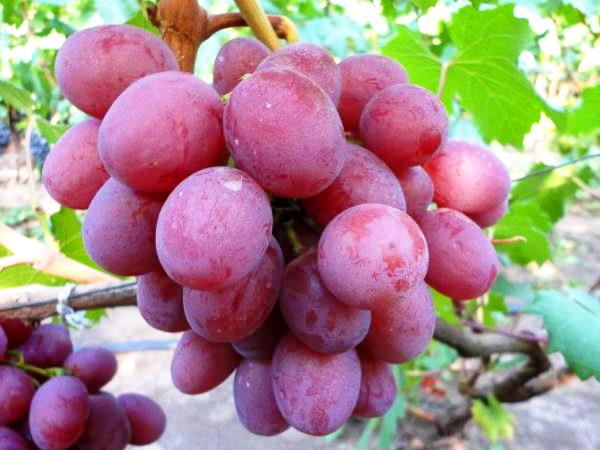For the first time the grape raisins Radiant was bred in Moldova about 30 years ago. To create it, varieties such as pink raisins and Cardinal were crossed, and from both varieties he took the best qualities. The second part of the name - Radiant - got the variety due to the appearance of ripe fruits. He took good taste and high yield from the Pink raisin variety, and early ripening from the Cardinal variety. It belongs to table varieties with early-medium (depending on climatic conditions) ripening and is considered one of the best among the Kishmish species, both in taste and in yield.
Characteristics of grapes
Since the ripening period of Radiant raisins grapes is 120-130 (depending on climatic conditions) days, or about four months, they begin to harvest it closer to the end of August. By the time of ripening, it is referred to as mid-season varieties.
The frost resistance of the variety is not high - the maximum temperature that it is able to withstand does not exceed −18 degrees. It is not surprising - after all, both of his "parents" also do not tolerate the cold.
The variety has a high yield. So, the average weight of a bunch is 600 g more, it can reach up to 1.5 kg, and up to 20 kg of fruit can be harvested from one bush. When doing viticulture in a summer cottage, and not on an industrial scale, more berries can be obtained from one bush, since in this case it is possible to pay enough attention to each seedling.
According to the description of the berries, the grapes of Radiant raisins are more like Pink raisins. The berries of this grape are large, elongated, their weight can vary from 3 to 5 grams. The color is dark pink. The variety is seedless, so it is not surprising that the berries are seedless, which makes the variety safe for consumption and therefore suitable for young children.
Due to the dense skin of the fruit, the grapes tolerate transportation and long-term storage well. The sugar content of the berries is about 20%.
In the case of this variety, heavy clusters are not only a plus, but also a minus: the branches are quite thin and can break under the weight of the berries.
The height of a seedling largely depends on climatic conditions, but, as a rule, Radiant raisins are classified as low varieties.
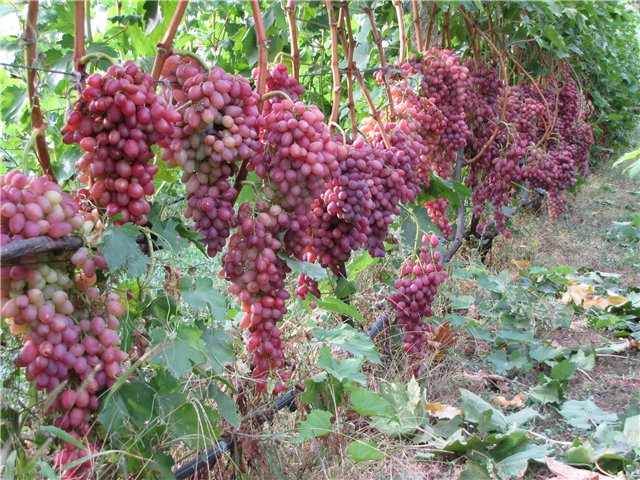
To prevent the vines from breaking under the weight of the bunches, a support must be prepared for them in advance.
The leaves of this variety are similar to the leaves of the Cardinal grapes - five-lobed, rounded. Their color depends on the amount of sun - those that are located higher are lighter than those that are closer to the ground.
Growing features
Despite the fact that the variety is considered unpretentious in care, it has one unpleasant feature: low resistance to diseases and pests, therefore, to get a good harvest, you need to constantly monitor the health of the seedlings and treat them with special means - as a preventive measure.
For cultivation, chernozem soil is optimal, but sandy, sandy loam and soddy are also suitable. How much water is required for irrigation depends on the type of soil.
They usually plant like this:
- Prepare a place for planting - a hole 80 centimeters deep and wide and apply fertilizers.
- Immediately before planting, the roots of the seedlings are immersed in water or a stimulating solution and left for a day.
- A few hours before disembarking, the pit must be watered (20 to 30 liters). The amount of moisture depends on the quality of the soil, black soil requires less moisture, sandy soil - more.
- The seedling is placed in a pit, the roots are carefully spread and covered with earth.
- After planting, the soil around the seedling is gently but abundantly watered. Irrigation usually requires 15 to 20 liters of water.
- After planting, the ground around the seedling is tamped and mulched (that is, the soil is covered with any convenient material - small pebbles, sawdust, hay - whatever). This is necessary for two reasons: firstly, to avoid the appearance of unnecessary weeds, and secondly, to reduce the evaporation of water.
- If the seedling already has long lashes, it is necessary to prepare a support for them (a trellis or, for example, a wall of a gazebo, if it is planned to grow grapes in a summer cottage), onto which these lashes are thrown.
When creating your own vineyard (even in miniature), it is important to be patient, since the lashes grow very slowly - about 10 centimeters per year. At the same time, the first small harvest from the bush can be harvested within one or two years after planting the seedlings.
Since Radiant Kishmish grapes have low immunity to diseases and need constant care, it is not so easy to achieve a high-quality harvest, and it will not be possible to do with watering and timely feeding alone.
To get a high-class crop, both quantitatively and qualitatively, the following conditions must be met:
- Provide space for the plant to develop (the recommended distance between bushes is 2.5 meters, and between rows is 3 meters).
- Water on time and stop watering on time - as a rule, it is recommended to water the grapes every three to four days. The amount of moisture depends on the soil - sandy requires more fluid, black soil - less. The average volume of water that goes to irrigate one bush is 20-25 liters. Watering is stopped two weeks before harvesting.
- Treat seedlings from pests and fungal diseases. For fungal diseases, the plant is sprayed 3-4 times per season, and pest control is carried out in the spring.
- Fertilize the plant.
- Prune branches in time, remove weak vines.
To obtain larger berries and bunches, some growers treat the inflorescences with a growth stimulant - gibberellin. In fact, this is not worth doing, since the berries in this case develop unevenly: some of them grow larger than usual, and some, on the contrary, turn out to be too small.
Fertilizers are used several times a year. In the spring, nitrogen fertilizers are used and applied directly under the root of the plant, and during the season they use preparations for foliar feeding. In general, the seedlings are fed with magnesium sulfate and potassium monophosphate.
Since radiant raisins grapes do not tolerate frosts well, they must be covered for the winter. To do this, before the onset of cold weather, the lashes are removed from the trellis and laid on the ground, covering them with hay, pine paws or other natural materials.
From above, the grapes are covered with a film, which must be periodically opened in winter, providing the plant with an influx of fresh air.
In order for the bush to grow and develop, the vines must be pruned. Too many bunches can damage the whip, and the bush may not have enough nutrients to ripen all the bunches. The number of bunches on the shoot depends on its age and condition - 2-4 bunches are left on young ones, and on old ones their number can reach 20. In general, when cutting, you need to look at the whip itself and at its strength and strength (or their absence ). The diseased vine is removed.
Advantages and disadvantages of the variety
The benefits of this grape variety include:
- taste - this variety is among the best types of grapes and is considered one of the best varieties of raisins;
- early ripening time;
- high yield and large clusters.
The disadvantages of the variety are mainly related to the growing conditions. These include:
- Relatively low frost resistance, which requires additional covering of the bushes.
- Susceptibility to disease, which is why it is necessary to carefully monitor the condition of the grape leaves.
- Slow growth of branches, due to which the expectation of a large harvest can be delayed.
For the cultivation of raisins raisins grapevine grower needs patience, care and the availability of free time for systematic plant care - and then the efforts to grow seedlings will be rewarded with a decent harvest.

